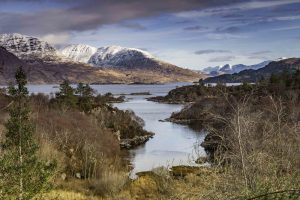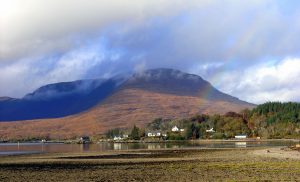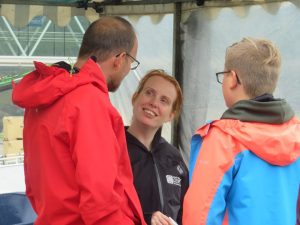About SHAPE Project
Wester Ross Biosphere
Wester Ross, located in northwest Scotland, is dominated by rugged mountains, remote glens and long, steep sided straths (valleys), which extend down to the sea. The conditions are exposed and the terrain difficult to cross and cultivate, leaving the area very sparsely populated – with around 8,000 people over 5,200 km2. People here have been managing the landscape for centuries, and their historical and present knowledge are vital to the future of our economic, cultural and environmental well-being.

Tourism is one of our main industries, alongside agriculture, fishing and forestry. The area is a destination for approximately 100,000 visitors each year, attracted to the vast areas of high-quality natural landscape and our rich cultural heritage, which includes a range of Neolithic archaeological sites as well as traditional activities that are still practiced today, such as crofting and Gaelic music. The traditional ‘Highland Welcome’ is world-renown as we value the sharing aspect of our culture; whether it is the food, traditions, landscapes or local knowledge.
Destination Management Planning
Tourism accounts for 35% of employment in Wester Ross. However, in the current climate (Summer 2019) there are concerns that an estimated rise in tourism of up to 27% over the past few years may not be sustainable. A different perspective highlights that this rise has followed a deep recession in the tourism industry and visitor numbers have yet to return to the high levels enjoyed during the 1990s. The current situation is exacerbated by Local Authority and Public Agency budget cuts which have resulted in plans to close public toilets and a deterioration in road quality.

In addition, the type of visitor has changed; Wester Ross is welcoming large amounts of campervans which require waste disposal facilities which are not yet in place. Local people are reporting over-flowing carparks and bins, increasing litter pollution and irresponsible behaviour.
It is not unusual for local residents to cite increased litter as a negative aspect of tourism and this together with other perceived negative impacts can become challenging to tourism development as the host community begin to view visitors less than favourably. Therefore, the World Tourism Organisation advises regions to adopt a model for tourism management which considers the social as well as the economic and environmental impacts of tourism. The strategic approach being implemented in Wester Ross is a Destination Management Plan (DMP) which is written in collaboration with all of the different stakeholders (including the community and industry). An effective DMP should:
- Have a clear statement of intent by a partnership/steering group to manage* a destination over a set period of time
- Have a clear list of priority actions with resources & individuals/organisations responsible for their delivery
- Have a monitoring/evaluation framework
There has been no hard-empirical evidence on visitor numbers, expectations and behaviour or condition of assets in Wester Ross which would allow communities, businesses, local authorities and public agencies to plan effectively. Tourism management in Wester Ross appears to be reactive whereas successful sustainable tourism must involve proactive planning and collaboration. Therefore it was essential that agreement was made with key public, private and third sector representatives to take an active role in:
“Coordinating and supporting the management of the aspects of Wester Ross which contribute to a visitor’s experience, taking account of the needs of visitors, local residents, businesses and the environment to ensure future sustainability.”

Destination Management Plans need to be based on a sound knowledge and assessment of all the features of Wester Ross that relate to the visitor economy.
Climate Change Mitigation
Destination Management is all about planning, development and marketing of a destination as well as how it is managed physically, financially, operationally and in other ways. Therefore, proper consideration must be given to aspects of climate change which will impact planning, development and marketing in Wester Ross.
The DMP steering group partners (Highland Council, Scottish Natural Heritage, Visit Scotland and Highlands and Islands Enterprise) have a legislative duty to report progress to the Scottish Government on their actions to adapt to Climate Change.
To give meaningful consideration to the physical threats to our tourism assets and infrastructure in Wester Ross, close collaboration with Public Sector and developing or building on novel tools to make information available to Private sector/community will be essential.

As sustainability is at the core of the DMP planning process, equal consideration has to be given to environmental, economic and social indicators. Experts in all these fields were required to be involved in the process to ensure this is achieved to not just an acceptable level, but one which excels in line with what is expected from a UNESCO Biosphere Reserve.
For this reason, visitors and residents were canvassed at local gatherings and events to collect views on existing assets, services and experiences. A complementary series of baseline reports were also produced in order to audit the area’s tangible and intangible assets. These findings will be presented to the wider stakeholders and communities who will determine the key actions to prioritise in the Wester Ross Destination Management Plan (estimated completion February 2020).



